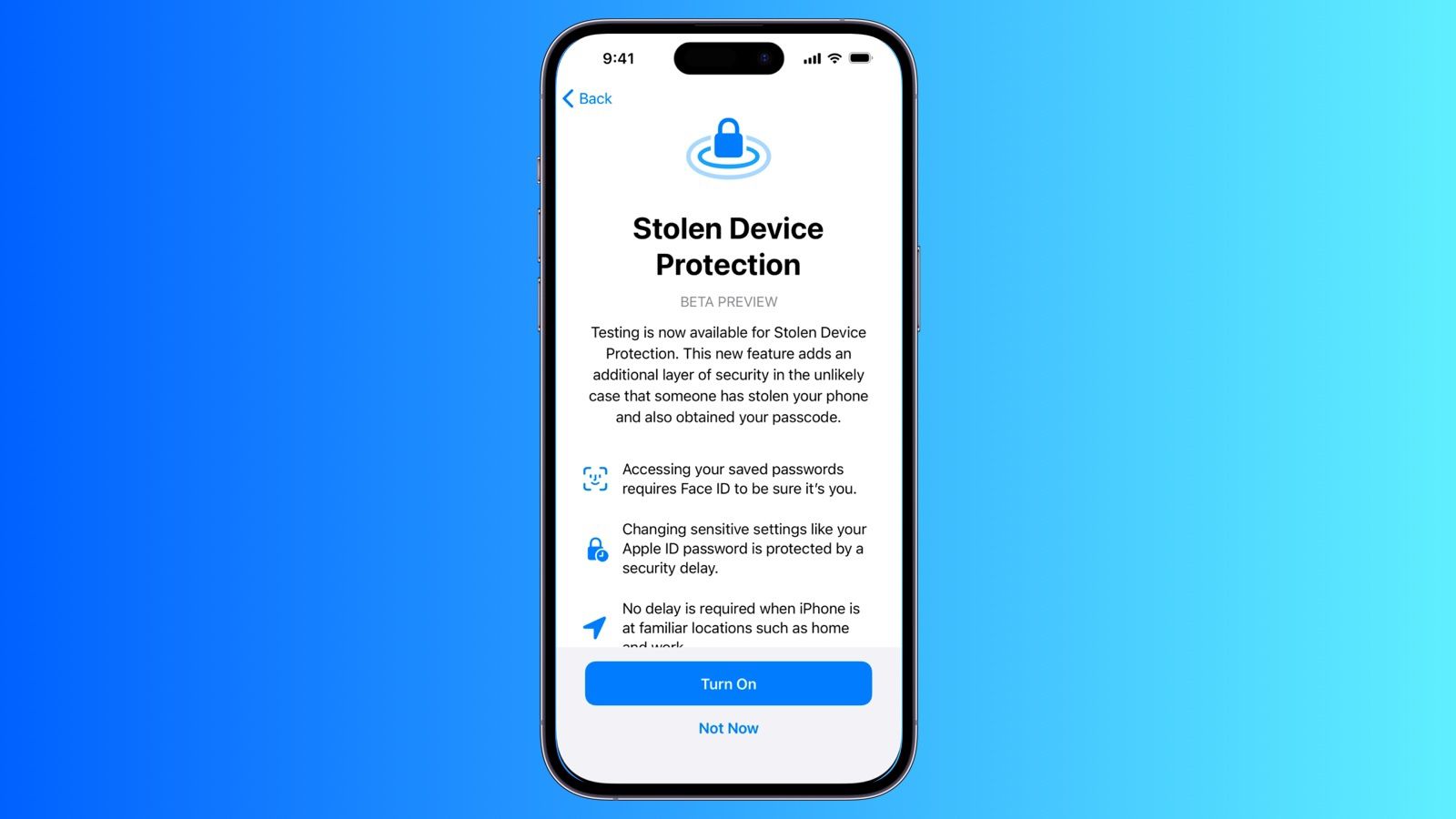
iOS 17.3 Brings Stolen Device Protection Feature For Added Security On Stolen iPhones
Apple is bringing new Stolen Device Protection features to its iOS devices. This new feature, which is available for testing with the recently released iOS 17.3 Beta adds an additional layer of security if your iPhone gets stolen and the thief knows your device’s passcode.
Users will be able to enable this feature from the Face ID & Passcode section of the Settings app on a device running iOS 17.3 or later.
When it is activated iOS will require users to authenticate with Face ID or Touch ID for certain actions. This includes getting access to your stored passwords and passkey in iCloud Keychain, turning off Lost Mode, Erasing all content and settings, and more.
Stolen Device Protection goes a step further when it comes to changing the passwords of Apple ID associated with the iPhone. To change the Apple ID password user needs to authenticate with Face ID or Touch ID, wait for an hour, and then authenticate with Face ID or Touch ID once again before they can change the password. iOS bypasses this requirement if it detects that the user is present in a trusted location such as their home or office.
Here’s a complete list of actions that will require a Face ID or Touch ID scan before they can be performed with the Stolen Device Protection device enabled.
- Applying for a new Apple Card
- Disabling Lost Mode
- Viewing and using Passwords stored in iCloud Keychain
- Viewing Apple Card Virtual Card information
- Erasing all content and settings
- Using payment methods stored in Safari for online transactions
- Taking certain Apple Cash and Savings actions in the Wallet App
- Using the iPhone to set up a new device
While the actions listed above can be performed after a Face ID scan, iOS will require the user to wait for one hour after a successful Face ID or Touch ID scan for the following actions if they are away from their home, office, or another trusted location.
- Changing Apple ID password
- Setting a new iPhone passcode
- Adding or removing Face ID or Touch ID
- Turning off Find My
- Turning off the Stolen Device Protection feature
- Updating Apple ID security settings
- Adding or removing trusted devices on Apple ID
- Modifying trusted phone number
- Changing Recovery contact
- Changing Recovery Key
With these changes, Apple has significantly improved the security of its iPhones. Before this feature thieves could gain access to an iPhone using the passcode and perform actions like changing Apple ID passwords, viewing stored passwords including those for bank accounts, turning off Find My, and more, and locking an iPhone user out of his or her device completely. WSJ did a detailed report on this issue earlier this year.
(Image credit: MacRumors)


